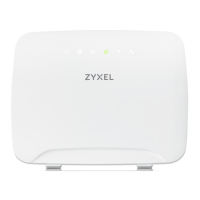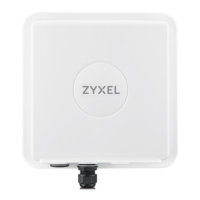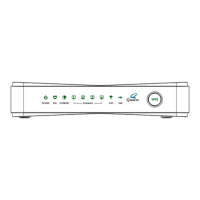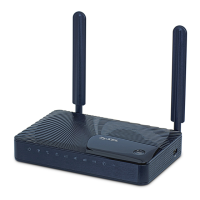Chapter 13 Spanning Tree Protocol
MES3500 Series User’s Guide
125
13.6 Configure Multiple Rapid Spanning Tree Protocol
To configure MRSTP, click MRSTP in the Advanced Application > Spanning Tree Protocol
screen. See Section 13.1 on page 115 for more information on MRSTP.
Figure 65 Advanced Application > Spanning Tree Protocol > MRSTP
The following table describes the labels in this screen.
Table 34 Advanced Application > Spanning Tree Protocol > MRSTP
LABEL DESCRIPTION
Status Click Status to display the MRSTP Status screen (see Figure 64 on page 124).
Tree This is a read-only index number of the STP trees.
Active Select this check box to activate an STP tree. Clear this checkbox to disable an STP tree.
Note: You must also activate Multiple Rapid Spanning Tree in the Advanced Application
> Spanning Tree Protocol > Configuration screen to enable MRSTP on the Switch.
Bridge Priority Bridge priority is used in determining the root switch, root port and designated port. The
switch with the highest priority (lowest numeric value) becomes the STP root switch. If all
switches have the same priority, the switch with the lowest MAC address will then become
the root switch. Select a value from the drop-down list box.
The lower the numeric value you assign, the higher the priority for this bridge.
Bridge Priority determines the root bridge, which in turn determines Hello Time, Max Age
and Forwarding Delay.
Hello Time This is the time interval in seconds between BPDU (Bridge Protocol Data Units)
configuration message generations by the root switch. The allowed range is 1 to 10
seconds.

